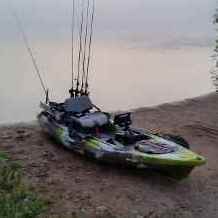As natural lakes age, they accumulate sediment and nutrients, and become increasingly more shallow and more fertile, going from oligotrophic to mesotrophic to eutrophic. Largemouth tend to be found in late mesotrophic and eutrophic lakes, while smallmouth tend to be found in late oligotrophic to mesotrophic lakes. Here in michigan, especially the northern half of the lower peninsula, we have a lot of lakes in the mesotrophic range with some zones that support more smallmouth and some that support more largemouth. But human development can make the transition speed up a lot, due to agriculture, fertilizer, erosion, shoreline changes, pollution, etc., and some zones of the lake may transition faster than others. You may well have a lake in which human development and use has caused some eutrophication, thus increasing the amount of suitable largemouth habitat a lot in a relatively short amount of time.
EDIT: I should add, the In-Fisherman books on Largemouth and Smallmouth have excellent, detailed discussions of this.





